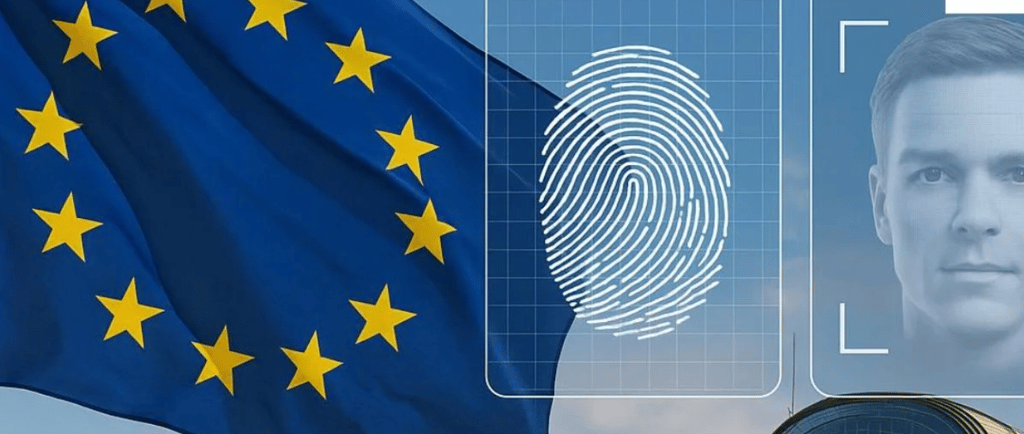Goodbye to Passport Stamps: Europe’s Biometric Revolution Begins October 2025
For decades, the crisp thump of a passport stamp marked the beginning of an adventure or the end of a journey. Travelers cherished those tiny inked emblems, each one a story, a border crossed, a memory sealed forever. But come October 2025, Europe will bid farewell to this beloved tradition.
10/10/20254 min read


Goodbye to Passport Stamps: Europe’s Biometric Revolution Begins October 2025
Introduction: The End of an Era in Global Travel
For decades, the crisp thump of a passport stamp marked the beginning of an adventure or the end of a journey. Travelers cherished those tiny inked emblems, each one a story, a border crossed, a memory sealed forever. But come October 2025, Europe will bid farewell to this beloved tradition. In its place: a sophisticated biometric Entry/Exit System (EES) that will revolutionize how travelers move across borders.
This change isn’t just a technological upgrade, it’s the dawn of a new era in international travel. From fingerprints to facial scans, from paper to pixels, Europe is transforming its borders into gateways of digital precision. The sentimental charm of passport stamps will soon be replaced by seamless automation, faster entry checks, and stricter compliance with visa rules.
So, what exactly is changing, and how will it affect millions of travelers planning to explore the Schengen Zone? Let’s dive deep into the future of travel and the goodbye that will reshape every globetrotter’s experience.
A New Era: Europe’s Entry/Exit System (EES)
Beginning October 12, 2025, the European Union will officially roll out the Entry/Exit System (EES), a high-tech platform that replaces the old-fashioned passport stamping process with biometric verification. This means that instead of a border officer stamping your passport, your fingerprints and facial image will be captured and stored electronically each time you enter or exit the Schengen Area.
The system will automatically record your exact entry and exit times, ensuring full transparency and accuracy. While both systems will run side-by-side for a few months, passport stamps will disappear completely by April 2026.
For travelers, this means no more cluttered passport pages or faded ink marks—but also no more physical proof of your European adventures.
Why Passport Stamps Are Disappearing
According to the European Commission, the traditional stamp system is outdated and prone to human error. Stamps can smudge, overlap, or fade, making it difficult to verify how long a traveler has stayed in Europe. These inconsistencies have led to visa overstays and border management issues across the region.
The EES aims to solve this by creating a fully automated, digital record that applies the famous “90 days in 180” rule without guesswork. This will make it easier for travelers to track their allowed stay duration and for border agencies to maintain tighter control over entries and exits.
Moreover, this upgrade promises greater efficiency—less time waiting in queues and fewer administrative delays, ensuring a smoother border experience for millions of travelers.
Where Will This Apply?
The new system will operate across all 29 Schengen Area countries, including major destinations like France, Germany, Italy, Spain, Portugal, and the Netherlands, as well as Nordic nations and Eastern European members.
Non-EU Schengen members such as Norway, Iceland, Liechtenstein, and Switzerland will also adopt the EES, ensuring a consistent experience across the continent.
However, there are exceptions: Ireland and Cyprus, which are not part of the Schengen Area, will continue to use traditional passport stamps for now.
Europe Isn’t Alone in Going Digital
While Europe’s shift feels groundbreaking, it’s actually part of a global movement toward contactless border control. The United States already uses the I-94 electronic system for tracking entries and exits, while the United Kingdom has introduced eGates and the Electronic Travel Authorisation (ETA) system for travelers.
Countries like Australia, New Zealand, Singapore, and the United Arab Emirates have also embraced fully biometric entry systems. Europe’s move simply brings it in line with these modernized travel standards, emphasizing speed, accuracy, and security over tradition.
What Travelers Should Expect
Starting in 2025, travelers to Europe will no longer receive the familiar ink stamp upon arrival or departure. Instead, their biometric data, fingerprints and facial recognition—will confirm their movement across borders.
While this ensures efficiency, it also means saying goodbye to a beloved travel ritual. Many travelers used to collect passport stamps as personal keepsakes, a tangible diary of their journeys. Unfortunately, authorities have confirmed that you won’t be able to request a stamp as a souvenir once the new system is in place.
But that doesn’t mean your memories have to fade. Consider collecting boarding passes, postcards, destination-themed pins, or even digital travel logs to replace your stamp collection. These can still serve as powerful mementos of your adventures.
The Benefits of Biometric Borders
The shift to biometric systems isn’t just about modernization—it’s about making travel faster, smarter, and safer.
Key advantages include:
Fewer delays at border controls due to faster processing times.
Increased security, as biometric data reduces the risk of identity fraud.
Accurate recordkeeping that helps travelers and authorities track visa durations effortlessly.
Better integration with future systems like ETIAS (European Travel Information and Authorisation System).
For frequent travelers and digital nomads, this evolution means less hassle, and for Europe, a more controlled, data-driven border ecosystem.
What This Means for the Future of Travel
The disappearance of passport stamps symbolizes a broader shift in how we experience travel. In the digital age, data is the new ink, and your identity will now travel with you in biometric form.
Future travelers will rely more on digital IDs, contactless verification, and automated immigration systems, all designed to make movement across borders more seamless than ever. While nostalgia for physical stamps will linger, the convenience and accuracy of biometric systems are undeniable.
Conclusion: A Bittersweet Goodbye
As the curtain falls on the era of passport stamps, travelers around the world are preparing to embrace a new kind of adventure, one defined by innovation, efficiency, and digital precision.
For some, it’s a sad farewell to the romance of travel history, the ink marks that told stories of faraway lands. For others, it’s an exciting leap toward a futuristic, paperless world, where technology ensures smoother, smarter, and safer journeys.
We are here to guide you to your dream destination: Connect with us on:
📞 Call/WhatsApp: +234 912 799 6321, +234 707 795 3867
📧 Email: contact@astraltrailng.com
📱 Instagram & Facebook: @astraltrail
🌐 Website: astraltrailng.com
#EuropeTravel #BiometricChecks #TravelUpdates #SchengenZone #VisaRules #DigitalTravel #AstralTrail #TravelAbroad #PassportNews #SmartTravel #VisaApplicationHelp #TravelAdvisory #StudyAbroadLife #GlobalEducation #TravelInspiration #FutureOfTravel #VisaExperts #Schengen2025 #TravelPlans #DigitalBorders
Destinations
Astral Trail is an expert educational consultancy and travel agency that provides consulting services to study and relocate abroad. We are continually expanding our capabilities and reach on a daily basis.
© Astral Trail 2025. All rights reserved.


Phone: +2349127996321, +2347077953867
Email: contact@astraltrailng.com
Address: 10 Wale Osoba Close, Martins,
Akute, Ifo LGA, Ogun state, Nigeria, 112005
